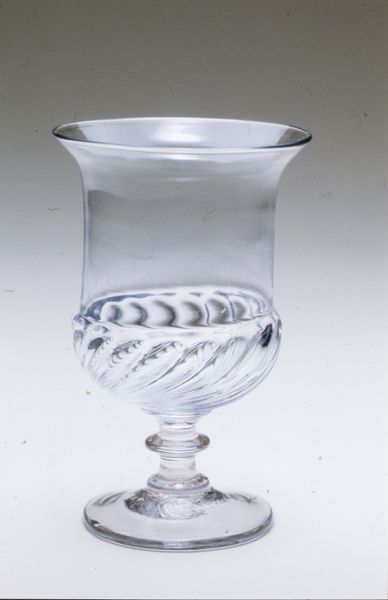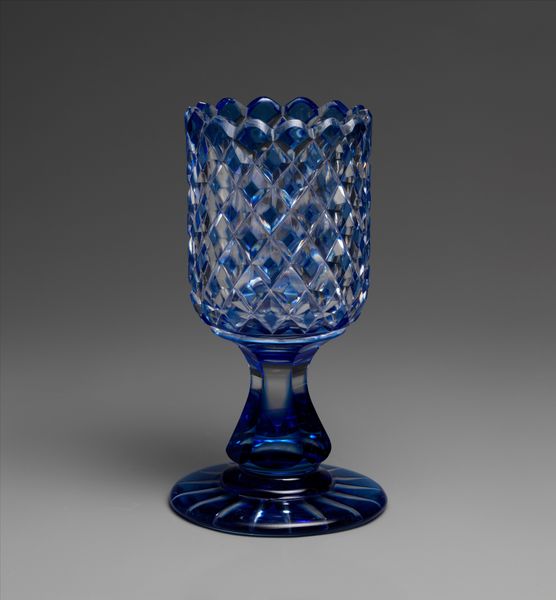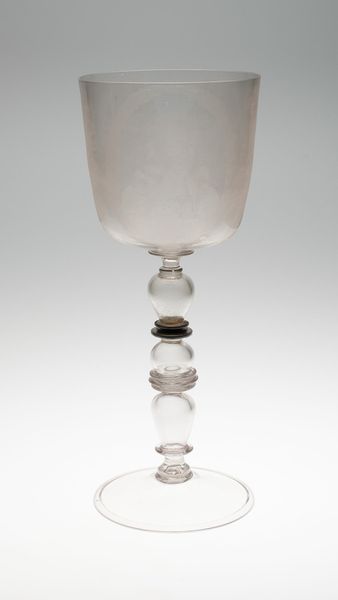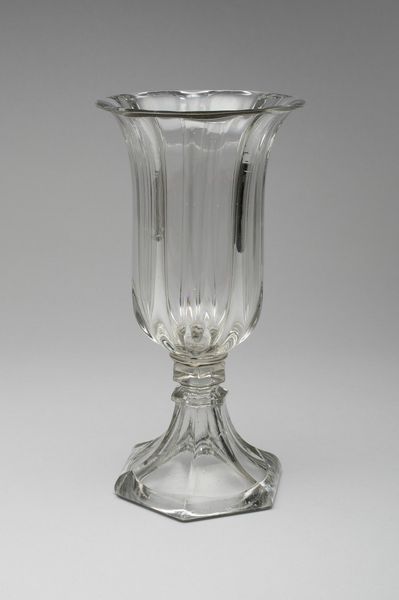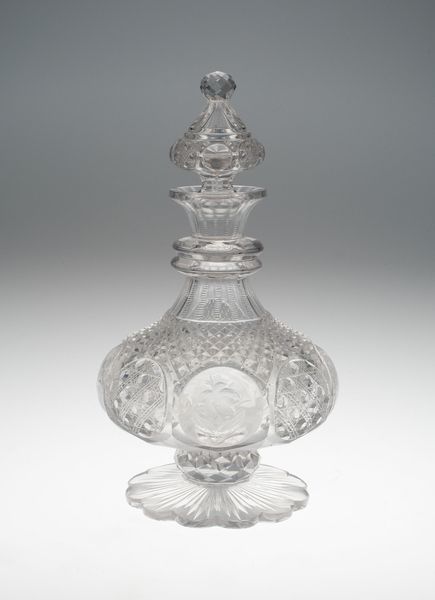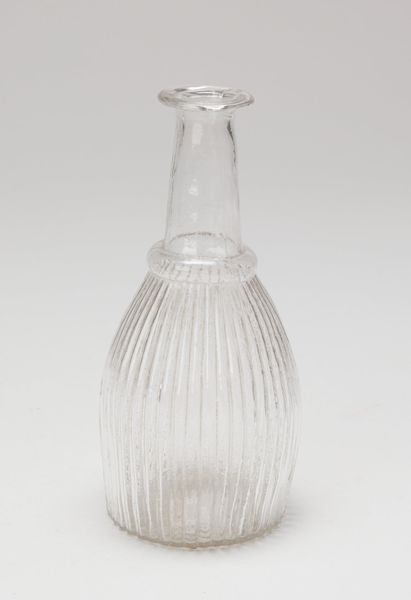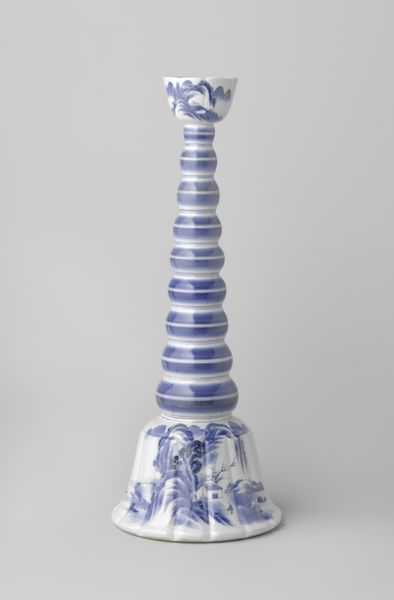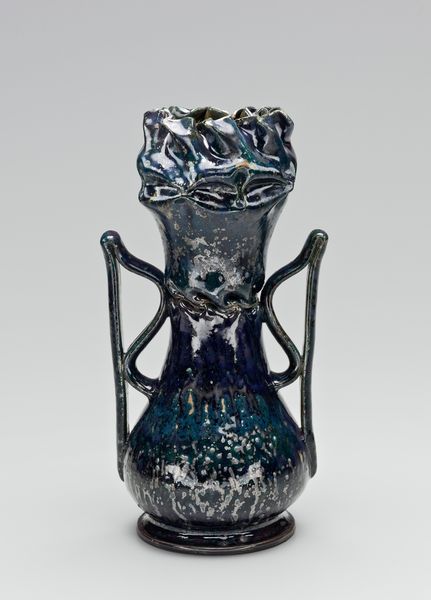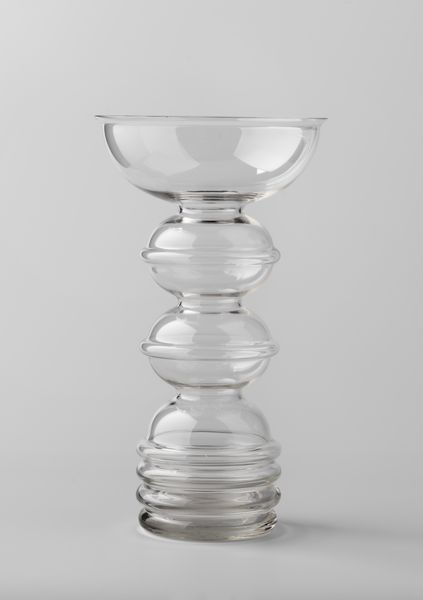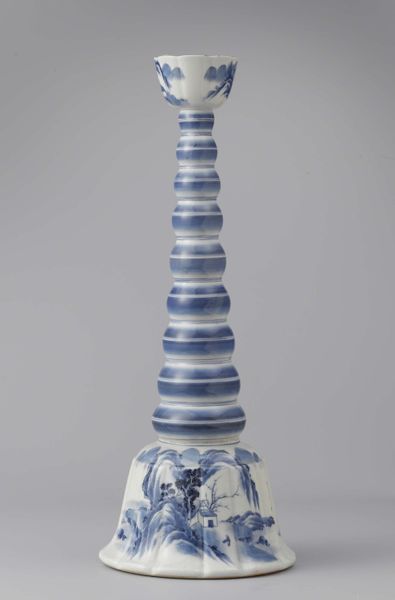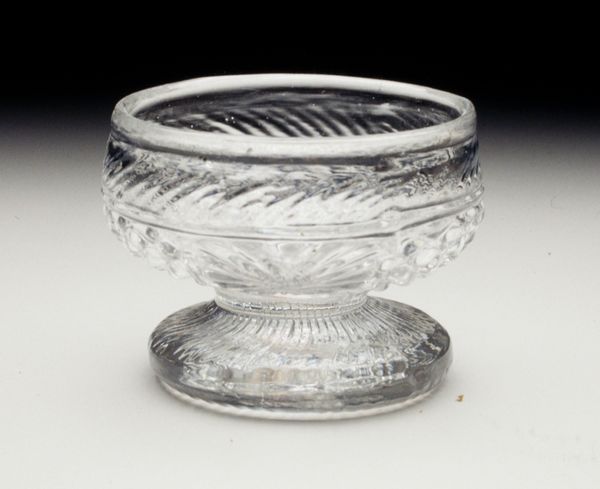
glass
#
medieval
#
form
#
glass
#
3d shape
#
geometric
#
decorative-art
Dimensions: 11 3/4 × 4 15/16 × 4 15/16 in. (29.85 × 12.54 × 12.54 cm)
Copyright: Public Domain
Editor: Here we have an exquisite glass goblet, crafted around the late 16th century by an anonymous artist. I'm struck by the way the delicate striations climb the undulating form. What aspects of this piece capture your attention? Curator: The pronounced emphasis on pure form is what truly fascinates me. Consider the way the artist manipulates the glass: the repeated curves create a complex rhythm, a visual syntax that moves the eye upward. Editor: So you're saying the form is more important than the function? Curator: Precisely. The functional aspect of a goblet is secondary. Here, the medium of glass is exploited to its fullest potential. Look closely at the filigree patterns. Note how they accentuate the spiraling shape, rather than merely decorating the surface. Are these patterns purely ornamental, or do you perceive a structural logic within them? Editor: Now that you point it out, the lines really emphasize the vessel's curvature and add complexity, transforming it into something beyond mere functionality. It seems like the interplay between those fine lines and the vessel shape create interesting optical illusions, wouldn’t you say? Curator: Indeed, these minute shifts and nuances add to the dynamism. The goblet is a triumph of aesthetic ingenuity. Editor: I see what you mean! Examining its structure unlocks a new perspective. I won't look at decorative art the same way again.
Comments
minneapolisinstituteofart almost 2 years ago
⋮
Tulip-shaped goblets came into fashion in the Netherlands without delay when these flowers were planted there systematically, and became fashionable to a degree that an investment-rally into tulips followed. The so-called Dutch 'Tulip mania' is the first recorded financial bubble documented in economic history—until it burst in 1637. Dutch glassblowers adapted the most sophistical and avant-garde glass techniques known from Murano, such as the white, vertical 'latticinio' threads, which together with the horizontal bulges create a sophisticated an highly abstract scheme.
Join the conversation
Join millions of artists and users on Artera today and experience the ultimate creative platform.
